The Cooler Master MasterCase 5 Review
by E. Fylladitakis on August 27, 2015 9:00 AM EST- Posted in
- Cases/Cooling/PSUs
- Cooler Master
- mid-tower
- Case
- Freeform
The Interior of the Cooler Master MasterCase 5
Much like the exterior, the interior of the MasterCase 5 is entirely black as well. Every part, with the sole exception of the motherboard's standoffs, is black. The metallic surfaces are sprayed with the same satin black paint as the exterior, while the few plastic parts are slightly glossy. A large rectangular hole is cut on the motherboard's tray to allow for the installation of aftermarket coolers without having to remove the motherboard.
A metal floor separates the system area from the PSU compartment. This floor is permanently attached to the frame and cannot be removed, which is not exactly great for a modular case that boasts maximum flexibility. However, it is necessary for the mechanical cohesion of the case, as the mechanical strength of the body is not great, especially for a case with two carrying handles. If not for the metallic floor, the rest of the chassis would be prone to twisting/bending.
There are two holes on the floor, covered with rubber grommets, for the routing of cables, as well as an opening near the front for the installation of liquid cooling radiators. There are also two slots for the "slip-and-clip" SSD pockets. Each pocket is held in place by a thumbscrew.
Each of the expansion slot covers is vented and held in place with a thumbscrew. The lowermost cover is different and can serve as an exit for up to three cables. To minimize the chances of pulling/damaging the cables when moving the case, they can be locked by twisting them over the hook next to the hole.
As the metal floor is fixed to the case, the PSU can only be installed by sliding it in from the rear of the case. Four thumbscrews hold the PSU cover in place. Cooler Master installed two rails that the PSU slides and sits upon once inserted. To insure that there will be adequate and proper air intake regardless of the power and position of the PSU's fan, the designer perforated the floor beneath the PSU all the way down to the center of the case. A metal stand is located in the PSU compartment, near the front of the case. It serves as a stand for a dual bay drive cage, if there is one installed, and can be removed to make room for a liquid cooling radiator.
Only one dual drive cage is installed in the standard version of the MasterCase 5. The user can move it vertically to any height between the top of the case and the compartment's floor, install it inside the PSU compartment, or even remove it completely. The 5.25" cage has convenient plastic lever locks for the devices. If desired, the 5.25" can be removed, allowing for the installation of a third front intake fan and or the installation of a 3.5" devices cage instead.
With the removal of the faceplate, virtually only the frame of the MasterCase 5 remains. The intake fans are installed from the front side of the case but there is not enough room for a radiator there. Liquid cooling radiators can be installed only to the inside of the case. Although the removal of the drive cages allows for the installation of three intake fans, a triple radiator is unlikely to fit, as its extra height will bump to the top of the case.
The radiators of all-in-one liquid cooling solutions should easily fit in the lowermost part of the case but beware of other solutions that may be too wide or thick. Also, do note that the presence of a radiator obviously denies the installation of a drive cage. A 240/280 mm radiator requires the removal of the metal stand in the PSU compartment as well.
The rear of the motherboard tray is all black as well. We can see two more slots for the "slip-and-clip" SSD pockets here but there are no pockets installed from the factory. Only two are provided with the case and can be installed on either the main compartment's floor or here. If more are required, Cooler Master is offering them as extras for $5 each. The clearance of 23.6 mm (0.93") is plenty for the easy routing of cables and the cable straps to the left aid cable management a lot. The only issue is that the presence of the SSD slots prevented the creation of cable tie mounting joints. There are only a couple of mounting joints located near the back of the case.
For the means of this review, we installed a Corsair AX760i with the red cable set, for strong visual contrast. It fits without issues inside the MasterCase 5 and the cables are long enough for a standard system. Still, do note that the CPU power cable is not long enough to be secured with cable ties across the edge of the motherboard tray, at least not without placing a lot of stress on the connectors. Other than that, cable management is easy and the design of the MasterCase 5 does help with cable management a lot.
A standard ATX system comfortably fits inside the system area of the MasterCase 5, even with the extra drive cages installed. However, cards longer than 29 cm (11.4") will not fit with a drive cage installed in front of them. Without a radiator installed, the maximum length of an expansion card is 41 cm (16.1"). If a radiator is installed, its thickness needs to be subtracted from this clearance. Up to a 280 mm radiator can be installed at the top of the case only if the extra top cover is purchased and installed and still we would not recommend the installation of a radiator thicker than 30 mm. Without the top cover, there is not enough clearance for a liquid cooling radiator, only for two fans.


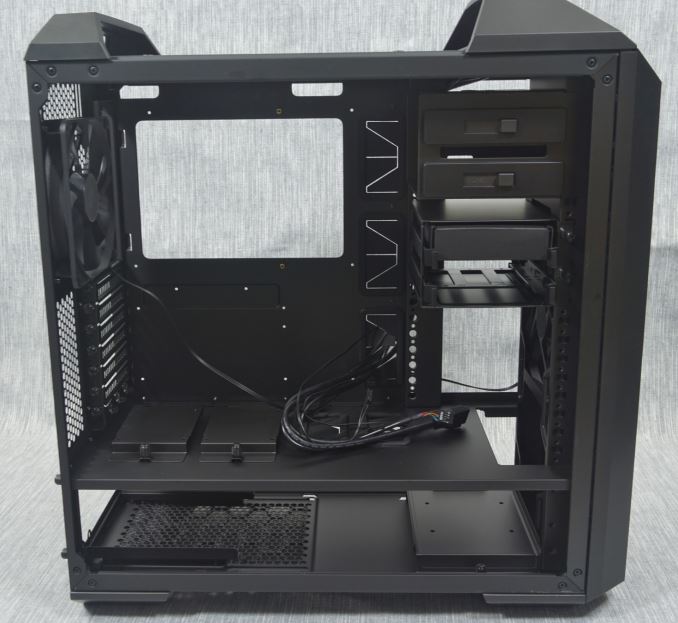
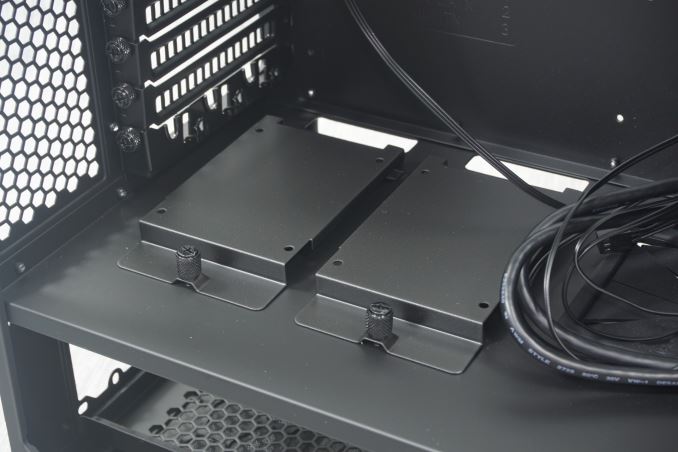

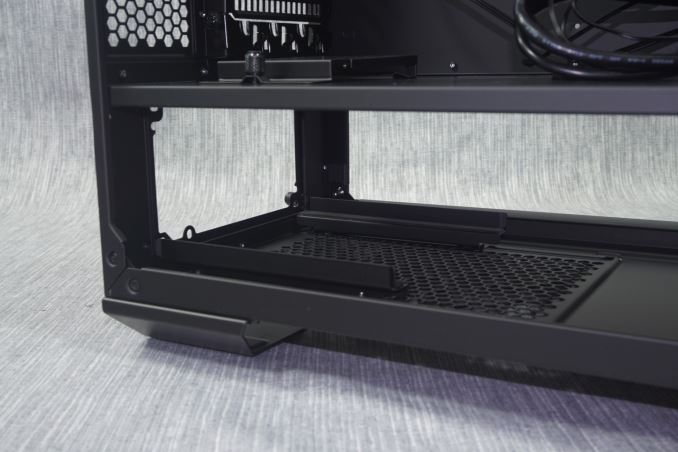
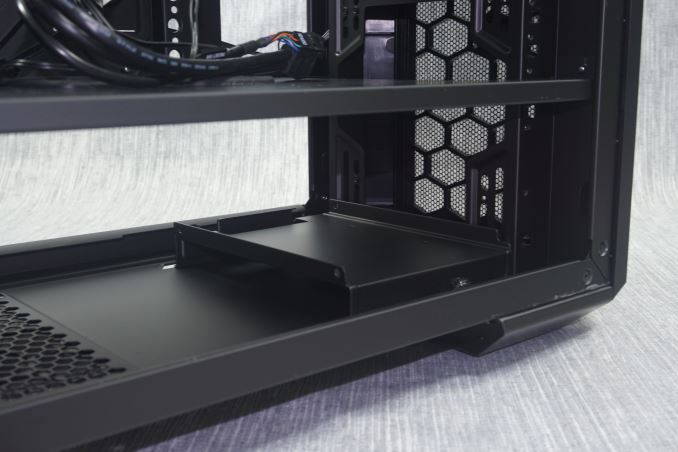
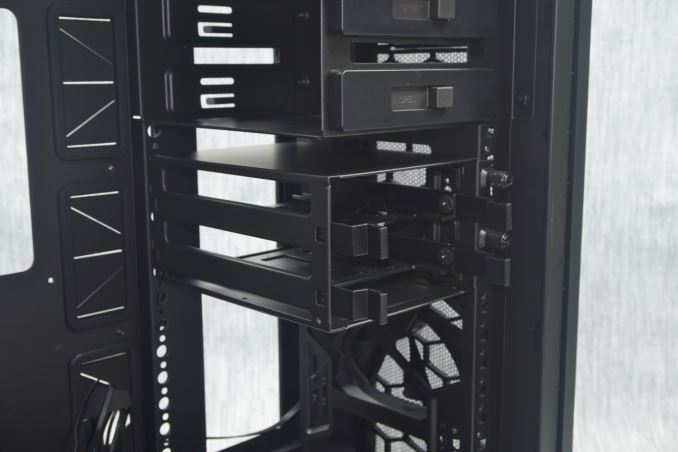
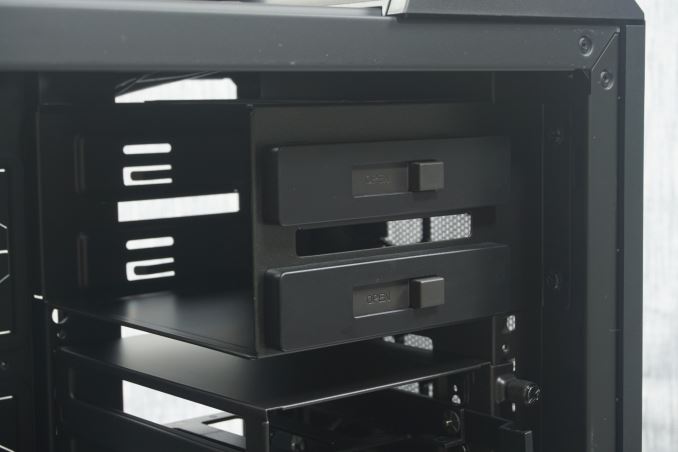
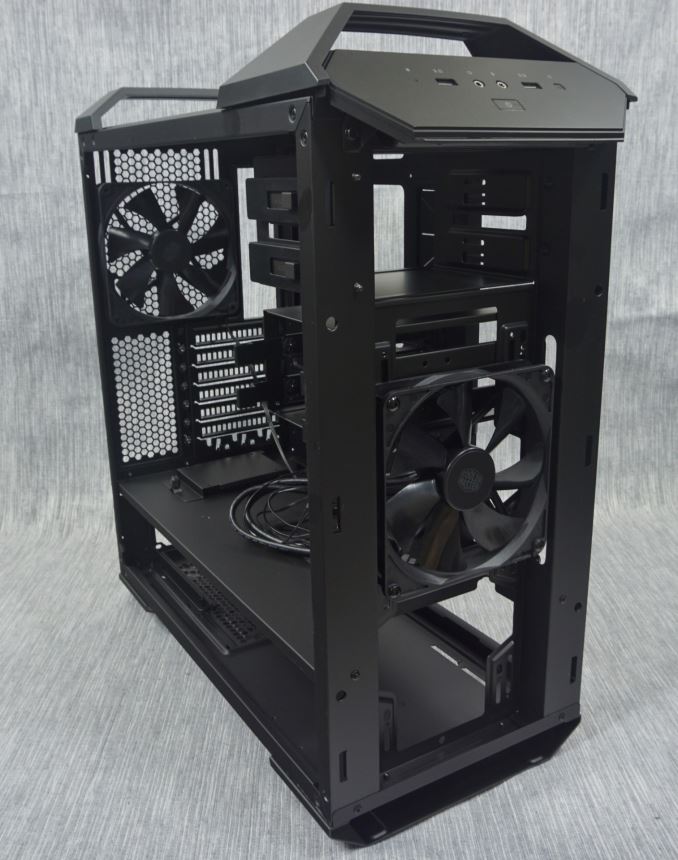
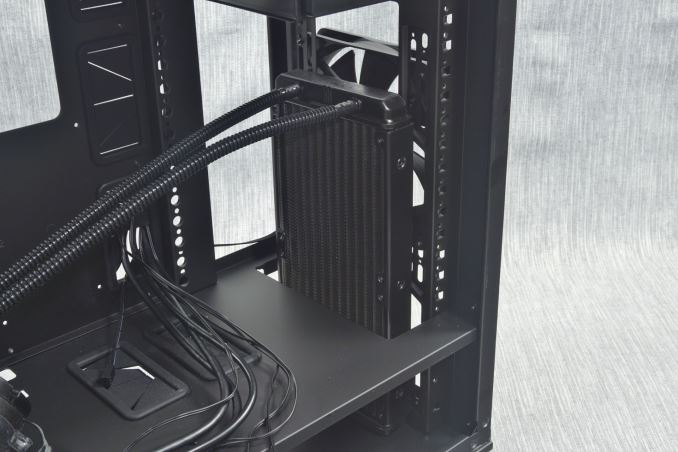
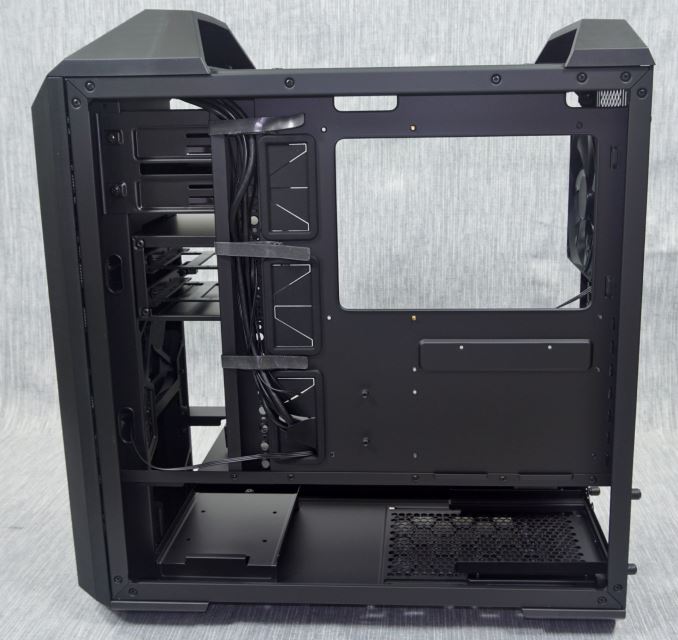
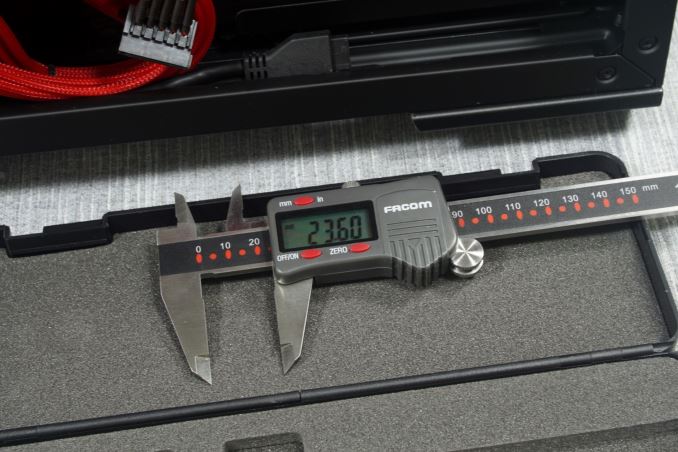
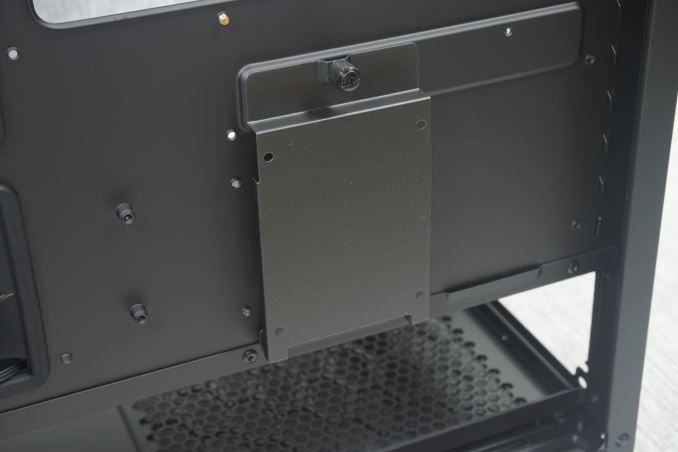

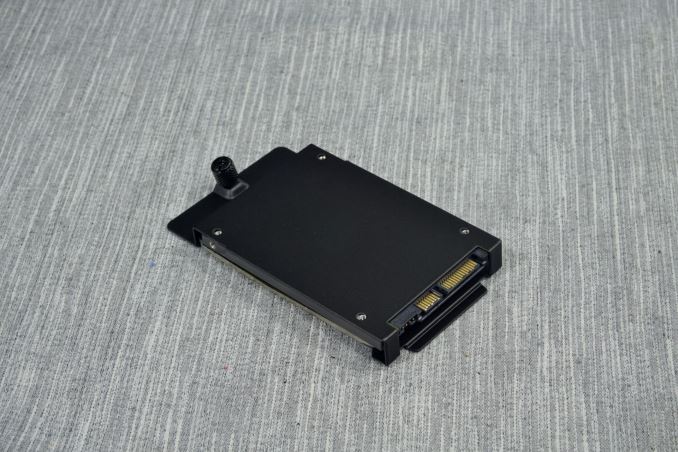
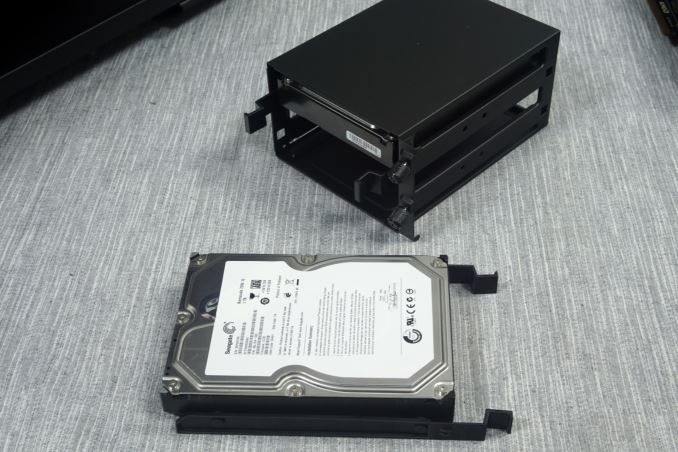
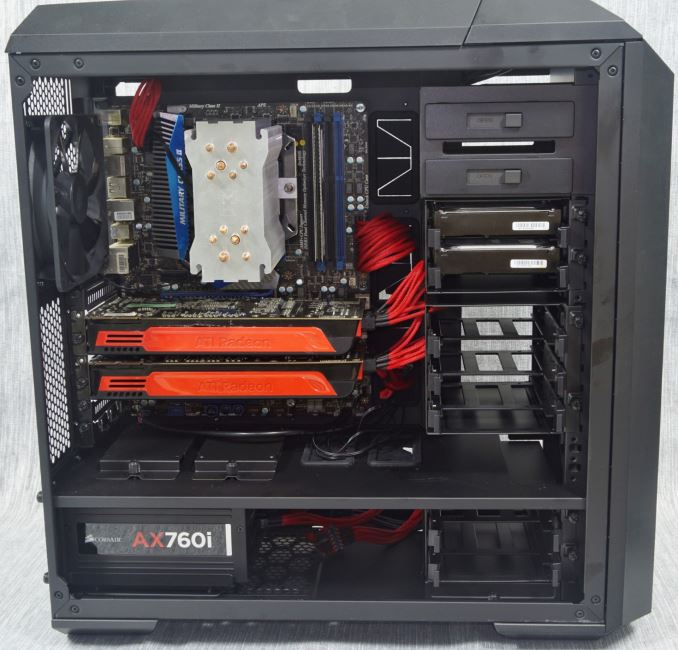
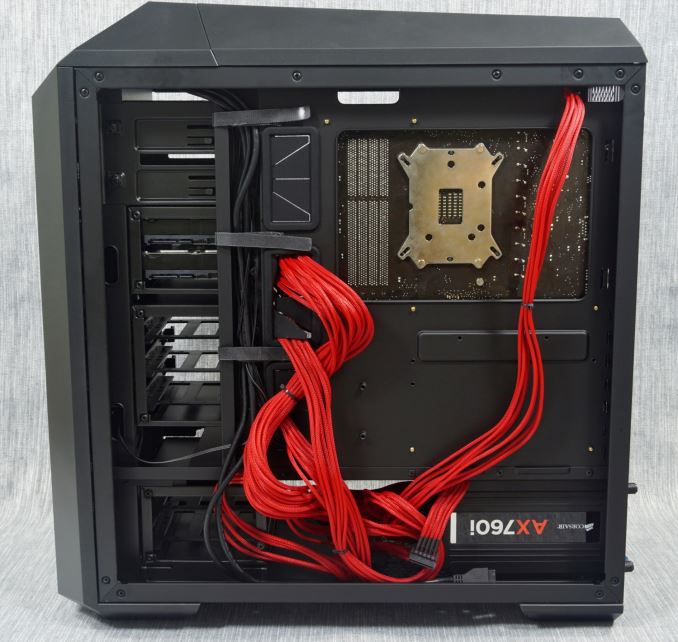








32 Comments
View All Comments
Haravikk - Tuesday, September 1, 2015 - link
I don't get the modularity of this case; many other cases in a similar size offer all these options as standard, this just seems like a flimsy effort to remove features and sell them to you as "modular components", which is only going to result in greater expense and reduced build quality, as an add-on bracket is never going to be as good as a fixed one built into the case.I'd much rather companies were looking at things they can remove to make the cases smaller or less cluttered, and designing the case around that, e.g- with custom airflow partitions, better cable management etc., rather than taking a complete case, ripping out a load of brackets and then trying to sell them back to me; sure the basic case may be less cluttered, but it won't be cheaper, and it won't be as good as a case designed around not having those brackets available at all.
Fiernaq - Tuesday, September 1, 2015 - link
No mention of CaseLabs? Modular is what they do.